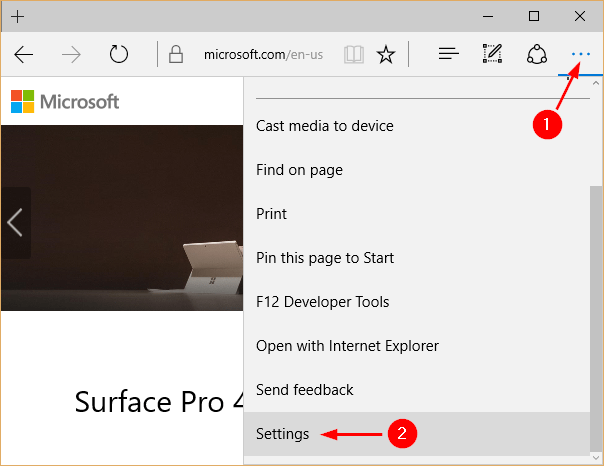Click an add-on in a list. You see whether the add-on is an ActiveX control by looking at the detailed information in the bottom of the window. If the add-on type is an ActiveX Control, you’ve found one. Disable the ActiveX control by clicking the Disable button. Change ActiveX-control settings in Word, Access, Excel, PowerPoint, Publisher, and Visio. Use the following instructions to enable or disable ActiveX controls in the Trust Center. Click File Options. Click Trust Center Trust Center Settings ActiveX Settings. Click the options you want, and then click OK.
Microsoft's new Edge browser will discard two of the oldest browser technologies found in the aged Internet Explorer (IE) and replace them with add-ons based on HTML5 and JavaScript.
The new extensions model won't be added to Edge until after the browser debuts this summer as part of Windows 10, however.
Previously, Microsoft had announced that Edge would abandon much of the legacy support of Internet Explorer 11 (IE11) and talked about an alternate add-on model, which implied ActiveX would not be supported. It confirmed the move last week in a blog, adding Browser Helper Objects (BHO) to the now-gone list.
Both are crucial to IE's proprietary add-on and extension framework.
ActiveX controls were analogous to the add-ons other browser makers, notably Mozilla (Firefox) and Google (Chrome), later offered to extend the functionality of their applications. Meanwhile, BHOs were essentially plug-ins that also integrated with the browser. While BHOs became synonymous with browser toolbars over time, they also were used by the likes of Adobe, which built its IE in-browser PDF rendering plug-in using the technology.
ActiveX and BHOs are ancient, harking back to 1996 and 1997, respectively, and have a long history of security and abuse issues. Both are Windows-specific, and so have been relegated to second-class citizenship as a more open, standards-based Internet developed under the aegis of first Mozilla, then later Google and others.

Disable Activex Microsoft Edge
'The need for ActiveX controls has been significantly reduced by HTML5-era capabilities, which also produces interoperable code across browsers,' Microsoft noted on its new Edge development blog.
'This is another good example of how Microsoft has been disrupted by the fast-changing industry,' said IDC analyst Al Gillen in a podcast recorded during Microsoft's Build developers conference two weeks ago. ActiveX, Gillen added, 'locked IE into the past' because of its proprietary nature and early success, which Microsoft felt had to be supported with each new IE to please the mostly enterprise customers who relied on the technology.

Starting fresh with Edge -- which will replace IE as the default browser in Windows 10 -- lets Microsoft shed that legacy support and move to a cross-platform model, Gillen added.
Microsoft plans to replace the dumped add-on and plug-in technologies with extensions crafted in HTML5 and JavaScript. That functionality, however, won't reach Edge until an undisclosed date after Windows 10 releases.
Earlier, Microsoft said that Chrome and Firefox add-ons built from HTML5 and JavaScript would need 'virtually no work' to run in Edge.
The withdrawal of ActiveX, BHOs and other old technologies from Edge got scattered applause from the developers during a session at Microsoft's Build conference. But Sean Lyndersay, a principal program manager lead on Edge, said to those cheering, 'You must not work in IT.'
For enterprises, features such as ActiveX and BHOs will live on in IE11, which also will be bundled with Windows 10 on PCs and larger tablets (but not Windows 10 Mobile). Businesses can use policy settings to mandate IE11 when the user steers towards certain URLs, say those on internal networks or line-of-business Web apps written long ago.
IE11 will be updated for Windows 10, but only with security improvements: It will not be given new features or functionality, indicating again that IE is a dead-end to Microsoft, and will be continued only for legacy purposes.

Like Windows 10 itself, Microsoft plans to update Edge far more frequently than it did Internet Explorer, with changes appearing at a tempo that has yet to be decided. 'Is it going to be 45 days or 90 days or 73 days? We haven't quite worked out the exact cadence,' said Lyndersay. 'But we have the technical ability to update and bring the entire user base along with us on a rapid pace.'
Activex Settings In Microsoft Edge
Yet IE11 will be supported for the indefinite future. Last year, when Microsoft abruptly told most customers that they had to migrate to IE11 by mid-January 2016, it said that IE11 would be supported for as long as 'the operating system for which it is installed,' meaning that it would survive support at least as long as Windows 7. That OS exits support in January 2020.
Whether that policy will also apply to Windows 8, 8.1 and 10 -- the latter may have an open-ended support lifetime -- was unclear, but during the Build session it sounded like it would not, and that at some point IE11 will be retired.
'We haven't made any statements there,' said Charles Morris, the other Edge principal program manager who ran the session along with Lyndersay, while answering a question about IE11's end of support. 'We haven't set a marker in the future. But [ending support is] definitely the direction we're moving. We want to provide a transition time for our customers to get off these old technologies, [but] we don't know exactly how long that will take.'
After last August's announcement curtailing support for older editions of IE, it would not be a shock if Microsoft did the same to IE11 in 2020 when it retires Windows 7. The move was a repudiation of a decades-old policy and signaled that nothing was safe from the chopping block.
Even IE.